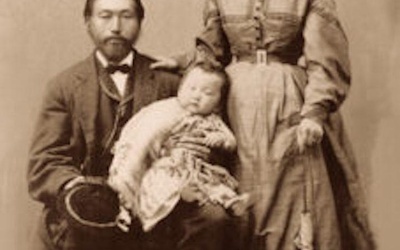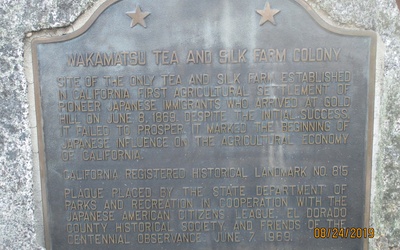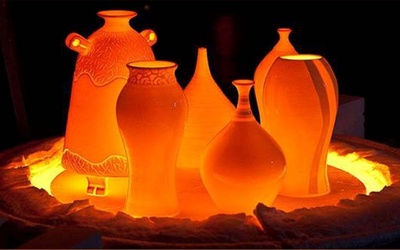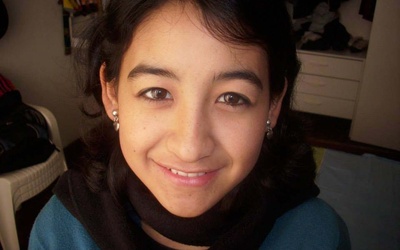Nikkei Chronicles #8—Nikkei Heroes: Trailblazers, Role Models, and Inspirations

The word “hero” can mean different things to different people. For this series, we have explored the idea of a Nikkei hero and what it means to a variety of people. Who is your hero? What is their story? How have they influenced your Nikkei identity or your connection to your Nikkei heritage?
We solicited stories from May to September of 2019, and voting closed on November 15, 2019. We received 32 stories (16 English; 2 Japanese; 11 Spanish; and 3 Portuguese) from individuals in Argentina, Australia, Brazil, Canada, Japan, Mexico, Peru, and the United States.
Here are the selected favorite stories by our Editorial Committee and the Nima-kai.
Editorial Committee’s Favorites
- ENGLISH:
Mine Okubo
By Edna Horiuchi - JAPANESE:
My Roots—The Legacy of Matsugoro Ohto
By Naori Shiraishi - SPANISH:
My Hero: Kiyoshi Kuwahara
By Fuyiko Kuwahara - PORTUGUESE:
Miyoko Fujisaka, 95 years old – Our Heroine
By Iraci Megumi Nagoshi
Nima-kai selection:
- 48 stars:
My Father Was A Tule Lake Resister
By Keiko Moriyama
Stories from this series
My Roots—The Legacy of Matsugoro Ohto
Oct. 18, 2019 • Naori Shiraishi
In the spring of 1869, a group of Aizu warriors migrated to California after their defeat during the Boshin Civil War. They founded the Wakamatsu Tea and Silk Colony during the California Gold Rush. One of the men who accompanied these settlers, Matsugoro Ohto, is my Nikkei Hero. While in America, he studied winemaking and helped to increase the popularity of wine in Japan after his return. Matsugoro was my great-great-grandmother’s father. In other words, he was my great-great-great-grandfather. I …
"My oba, the greatest inspiration!"
Oct. 16, 2019 • Milagros Tsukayama Shinzato
Who inspires me to be better? I think my oba does. Although I still don’t know how she overcame so many challenges, became successful, and helped others. And just like a heroine, she never expected anything in return. My oba was 92 when she died and I was 9. The difference in our ages was more than 80 years! I think that gave my oba a certain “halo” of mystery. She never told me the story of her life. She …
The Family of Shinjiro Dote and Pre-WWII Japanese of El Dorado County, CA.
Oct. 15, 2019 • Ryan Ford
The trials and tribulations of pre–World War II Japanese on the West Coast are well documented, but there was a small group of them that were uniquely special and nearly lost to obscurity. The adversity they faced was as unparallel as the historical significance of their community of El Dorado County, CA. I’m a mixed race Sansei. My family decided in 1971 to leave southern California for the quieter rural El Dorado County in northern California three weeks before the …
Heroes: dream, work and transformation
Oct. 14, 2019 • Oswaldo de Campos Macedo
Oh! Dreams! Dreams! Dreams! Nothing is finalized by human hands, especially when they are on the other side of the world. It is with these hands calloused by time, by history, that the weight of culture transforms the land into art, molding the clay, reconnecting each element until reaching the final product. Everything seems ready and finished. No, none of this is finished because each piece will be unique and nature will make its final touches. The marks between the …
My Hero: Shinya Honda
Oct. 11, 2019 • Beverly Sugimoto
Shinya Honda was my hero because he never looked back. He always persevered and took responsibility for his own life and even took care of his mother and three sisters. Uncle Shin never complained about his circumstances or the terrible events that took place at the age of 15, when his father died. Above all, I am grateful to Uncle Shin and his whole generation who worked hard to serve our country. In spite of the incarceration in concentration camps …
Cynthia: A thousand cranes, a cherry blossom and the transience of life
Oct. 9, 2019 • Marco Carrasco Villanueva
Since I can remember, like everyone who was born in Peru in the nineties, Japan has been very present in my life. How can I forget the first time I tuned in and watched Dragon Ball or Saint Seiya for the first time, or even Dekirukana or Puppet Theater . Being born and living in Jesús María, near the Peruvian Japanese Cultural Center, also made me very excited since I was little to learn more about this interesting culture. However, …



































